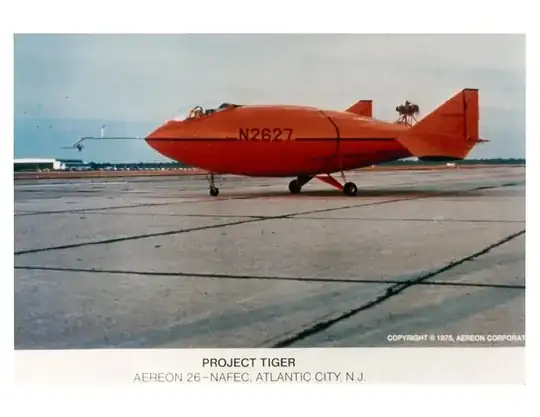First off, you are incorrect as to your analysis of the Hindenburg. Not only was it not a blimp (it's a rigid airship, not to mention the Navy's 100+ sized fleet of blimps during World War Two to spot submarines), but the crash of the Akron, the explosion of the Dixmude, and the crash of the R101 were all far worse accidents (and the Hindenburg made 60+ flights over its lifetime). They all happened before the Hindenburg even flew once. Yet they kept building them. Not only that, but Luftschiffbau Zeppelin built another Hindenburg-class Zeppelin, called the Graf Zeppelin (even though another Zeppelin with that name already existed). And even beyond that, another Zeppelin, even larger, was under construction when World War Two started. The two Graf Zeppelins and the under construction LZ-131 were all scrapped by the Nazis for war material.
So, what killed the Zeppelin? Well, let's go back. Back to the past. How far? About a hundred years. World War One was, arguably, the golden age of the Zeppelins, with over 100 built in a span of just four years. But at the end, the Zeppelins weren't all that effective as bombers. Even so, the Treaty of Versailles essentially killed the German airship industry. Despite that, two more Zeppelins were built right after the war. LZ 120 "Bodensee" and LZ 121 "Nordstern," both of which were seized by the Allies. However, LZ 120 managed to operate for a decent amount of time, and despite its short timeframe of operation, it transported over two thousand people across Europe. Pretty good, if you ask me. But what really killed the Zeppelin? It wasn't the Hindenburg, the Dixmude, the R101 (although that did kill British airships), or the Akron (which was succeeded by the Macon, both the Akron and the Macon were flying aircraft carriers, btw). What killed the Zeppelin was The Treaty of Versailles, the Nazis, and World War Two.
The Treaty of Versailles essentially demanded the dismantling of the German airship industry. After the LZ 121 was seized, no new Zeppelins until LZ 126, later the USS Los Angeles after being handed over to the USA, were built. Had Germany been able to keep their airship fleet and refit them for airline service, as well as introduce LZ 120 and LZ 121 in peace, a fairly healthy Zeppelin airline would've likely been in operation throughout the 1920s, perhaps stretching into the 1930s with the introduction of the Hindenburg-class ships perhaps occurring slightly earlier.
But, let's assume that even this optimal situation does not occur.
The Nazis. Always ruining our fun. After the Hindenburg disaster, the Zeppelin company was able to appeal to the US to get access to Helium. There was more than enough, and due to its rarity venting it would be out of the question (many hydrogen filled airships vented lifting gas as they burned their fuel). As such, a one time shipment would be all, save for the small possibility of loss from leaks and other potential problems. And, just as the US was about to give the Helium over (under the condition that it be used only for civilian purposes), the Nazis began an aggressive annexation of Austria. The US thus refused to supply the necessary Helium that the Zeppelins needed to continue commercial operations. Even so, the second Hindenburg-class ship, LZ 130, made 30 flights (none were for commercial purposes) before it was scrapped.
World War Two changed just about everything. Beyond the Zeppelins being scrapped, the war provided an enormous impetus to develop long ranged bombers and troop transports. As such, the new DC-3 was built in such huge numbers that after the war it flooded the market for airliners. The massive increase in aviation technology as a result of World War Two made Zeppelins irrelevant for passenger carrying purposes.
So what are we left with? Well, we have a few options to make Zeppelins grace our skies once more.
Option 1: Change World War One or the Treaty of Versailles. Doing this would probably enable the Zeppelin industry to flourish, perhaps over one thousand rigid airships could be in service by 1940? Sounds like much, but if they could build 25 per year in Germany alone...
Option 2: Change other rigid airship accidents as well as the Hindenburg. The Dixmude, the Akron, the R101. Remember, the R101 was the accident that killed the British airship program. If those accidents didn't happen, rigid airships may still grace our skies. Not all of them would be Zeppelins, but even so...
Option 3: The Nazis do not come to power. This may actually make construction of the Hindenburg impossible, but no one really minds a little bit of handwaving. Or maybe leave the Nazis, but delay World War Two or perhaps make it never happen.
Option 4: Airplanes are never invented. With no competition due to the nonexistence of dynamic lift vehicles, static lift(airships, balloons) is the only option.
Option 5: Handwavium. Basically some miracle material that reduces an object's weight. Would also create interesting airplanes.
Option 6: Some sort of combination of the above, or something you come up with.
All of this is available on the internet, although do be wary, LZ 120 was the designation of another Zeppelin. There are some weird things involving Zeppelins, but until World War Two, Zeppelins were the most capable aircraft in the world. Capable of non-stop flight across the Atlantic, carrying tons of payload, or, even during World War One, later on in the war they had designs which could carry 3 metric tons of bombs, rivalled only by bombers in the late 1930s and early 1940s. Almost 20 or 30 years earlier.

